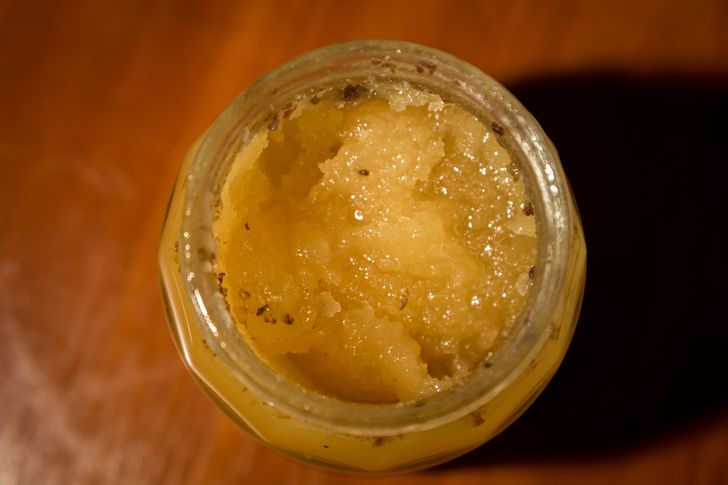18 Cunning Pets That Are Incredibly Skillful at Making a Sad Face


The microwave is a wonderful device that saves us invaluable time. Food heats up faster in it than it does on the stove or in the oven, and you don’t need to control the process. Just choose the mode, set the timer, and you can look forward to your future meal. But not all dishes are microwave-friendly. Some of them may deteriorate during the cooking process while others can form substances harmful to our health.
We at Bright Side have come up with a list of products for which the microwave is a real enemy. And as a bonus, we’ll share a list of little kitchen tricks this household device is perfect for.
Processed meats contain preservatives, and when they’re exposed to electromagnetic radiation, they transform into hazardous chemical compounds such as oxidized cholesterol.
The crispy crust of fried chicken turns into a moist, unpleasant coating in the microwave, and the meat itself gets heated unevenly.
Anyone who has ever tried heating a fish dish in the microwave knows that this is unforgettable displeasure. For one thing, the entire living space gets filled with a “not-so-fantastic” smell. Secondly, the fish turns into something inedible. For example, if you reheat salmon in the microwave, the food will lose all moisture and become dry and firm.
In the microwave, broccoli loses most of its beneficial properties. It’s best to steam it. This will preserve the taste of the product and most of the vitamins and minerals.
Greens (like beet leaves, for example) have certain properties and they can catch fire when processed in the microwave. As a result, instead of a delicious meal, burnt food will end up on your table, and the household appliances will become spoiled too.
Electromagnetic radiation triggers the formation of harmful nitrosamines in spinach and beets. These substances may be carcinogenic.
Capsaicin, which is found in chili peppers and gives them their pungent hotness, begins to evaporate when the peppers are cooked in the microwave. As soon as the microwave door is opened, the room will be filled with puffs of acrid smoke.
Fresh grapes and gooseberries are transformed into plasma pieces in the microwave — a picturesque but risky experiment.
It’s hard to imagine a dish more unappetizing than a microwaved pizza. The crisp edges turn into something moist and sticky, and the cheese takes on the strength of concrete and the texture of rubber. There’s nothing harmful in this food, but you won’t get any joy while eating it. It’s better to reheat the dish on a hot pan or in the oven at a high temperature.
Don’t put food in the microwave in the same containers they were delivered in. Cardboard boxes often contain dangerous materials such as glue, ink, wax, plastic, or metal, and they can start a real fire in your home.
Chinese food retains its flavor and charm, even when it’s cold. Such dishes can be reheated if you want to but don’t do it in the microwave. The problem lies in the ingredients themselves. The microwave turns this delicious food into something slimy, wet, and unappetizing.
Microwaving rice always leads to an unpredictable result. If the rice has been stored at room temperature for a long time or has spent more than a day in the cold, it’s better just to throw it away. Rice grains contain the bacterium Bacillus cereus, which can persist in food after its initial preparation. The microwave oven doesn’t raise the temperature high enough to kill these pathogens, and it can lead to serious poisoning. The same applies to many foods that contain starch.

Watery soup can be microwaved without posing any problems. However, thick pureed soup is a whole other story. After a while, the dish will begin to explode with fireworks of soup drops that will hopelessly splatter inside the device. This is because the liquid in the tray gets heated unevenly. To avoid this effect, stir the soup once every minute. You can also put a wooden spoon or stick in the bowl with the soup.
The microwave completely destroys the taste of the coffee. No harmful substances are formed in the drink, but only those who love bitter and sour flavors will be able to enjoy it. If you really want to finish a cup of your favorite cold drink, you should simply add ice to it.
Infant formula, baby food, and breast milk don’t heat up evenly in the microwave. So hot spots can appear in the liquid and can potentially burn the baby’s tongue, mouth, or throat.
Plain water in a cup can also surprise you. In a microwave, the temperature of the liquid rises, but the bubbles that accompany the boiling process don’t always appear on the surface. If you put a bag of tea or a spoon in such water, the liquid will immediately boil, and the cup may explode.
Various oils, such as olive, grape, canola, or sesame, are not liquids but fats. So the oil in the microwave simply won’t heat up to the required temperature.
While you’ve thoroughly studied the entire list of products that shouldn’t be heated in the microwave, you don’t necessarily need to get rid of this household device. A microwave is a useful appliance and it can be used for completely unexpected purposes.

Peeling vegetables: Sometimes, zucchini or root vegetables are hard to peel. To speed up the peeling process, it’s enough to leave the vegetables in the microwave for 2-3 minutes, setting it to the lowest power mode. After that, it’ll be much easier to remove the skin.
Cutting onions: To avoid unnecessary tears, keep the onion in the microwave for just 45 seconds. This will destroy the enzymes responsible for the production of corrosive gas, which irritates the eyes.
Beating the milk into foam: You can make a cappuccino without an expensive coffee machine. To do it, pour the milk into a glass or ceramic jar with a lid that can be closed (it should be half-full) and shake it vigorously. It takes 30 or 60 seconds for the milk to turn into foam. Then put the jar in the microwave for another 30 seconds and watch the foam rise. Just add it to the coffee and the cappuccino is ready.
Experts recommend reheating any dish only once. The longer the food is stored, the higher the risk that harmful microorganisms and bacteria will develop in it. When properly prepared, food won’t cause any harm to your health. But you should buy a kitchen thermometer to measure the temperatures of dishes after heat treatment. Also, stir the food thoroughly so that there are no parts with cold ingredients — they can become a breeding ground for bacteria. The more often you reheat food, the less tasty it becomes — vegetables turn into porridge and meat becomes rubbery.
Would you add anything to our first or second list based on your personal experience?











